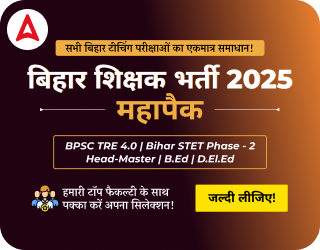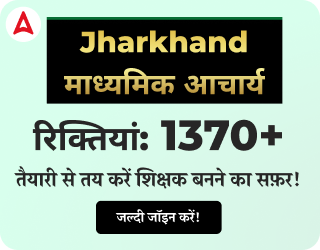Table of Contents
Education develops a child’s personality physically, mentally, emotionally and overall. The government started the Right Of Children To Free & Compulsory Education to make children educated fully. 86th Amendment) Act, 2002 inserted Article 21-A in the Constitution of India to provide free and compulsory education for all children in the age group of six to fourteen years as a Fundamental Right. Here we are going to learn in detail about the Right of Children To Free & Compulsory Education benefits which is a significant topic for exams like CTET, REET.
Right of Children to Free and Compulsory Education (Amendment) Rules, 2024
The Right of Children to Free and Compulsory Education (Amendment) Rules, 2024 have been introduced by the Central Government under the powers conferred by section 38 of the Right of Children to Free and Compulsory Education Act, 2009. These amendments aim to refine the promotion and examination policies for students in elementary education, particularly for classes V and VIII. Key provisions of these amendments include:
- Regular Examinations and Re-examinations: Students in Class V and Class VIII will undergo regular examinations at the end of each academic year. If a student fails to meet the promotion criteria, they will be given additional instruction and an opportunity to reappear for the exam within two months of the results being declared.
- Holding Back Policy: If a student fails the re-examination, they will be held back in their current class. However, throughout this period, the class teacher will identify the student’s learning gaps and provide specialized guidance to both the child and their parents.
- Competency-Based Assessments: The examinations and re-examinations will focus on competency development rather than memorization and procedural skills. This aligns with the holistic development approach emphasized in the rules.
- No Expulsion: The amendments clarify that no child can be expelled from school until they have completed elementary education.
Right Of Children To Free and Compulsory Education
86th Constitutional Amendment, 2002
- Art 21-A inserted in Fundamental Rights
- The State shall provide free and compulsory education to all children of the age of 6 to 14 years in such manner as the State may, by law, determine.
- Right of Children to Free and Compulsory Education Act 2009 was notified on 27th Aug. 2009
- The act will be in force from 1st of April 2010
The Act: Child rights
- Defines ‘free’ as removal of any financial barrier by the state that prevents a child from completing eight years of schooling
- Compulsory means- compulsory admission, attendance, and completion of EE.
- And defines ‘compulsion’ as a compulsion on the state/ local bodies, rather than targeting parents, the fundamental duty of parents to send children to schools
- Not enrolled/dropout children be admitted to age-appropriate class
- Special training to enable such children to be on par with others
- A child so admitted is entitled to completion of EE even after age 14
- Softens barriers like birth certificates, transfer certificates, etc
- No child shall be psychologically abused by calling him/her ‘failed’ in any class up to class 8, or expelling him/her from school
- Bars corporal punishment, mental harassment
- Provide education facility in the neighbourhood within 3 years
Teachers
- Qualification for appointment of teachers to be laid down by academic authority authorized by the Central Government
- Lays down the academic responsibilities of teachers
- Prohibits private tuition by teachers
- Prohibits deployment of teachers for non-education purposes, except decennial census, disaster relief, and election
PTR
- Requirement of additional teachers to maintain PTR – within 6 months
| At primary level | |
| Admitted children Up to 60 | Two |
| Between 61 to 90 | Three |
| Between 91 to 120 | Four |
| Between 121 to 200 | Five |
| Above 150 | 5 teachers + one Headteacher |
| Above 200 | Pupil-Teacher Ratio 1:40 (excluding Headteacher) |
At the upper Upper primary level
At least one teacher per class so that class there shall be at least one teacher each for
- Science and Mathematics;
- Social Studies;
- Languages
At least one teacher for every thirty-five children.
Where the admission of children is above one hundred
- a full-time head teacher;
- part-time instructors for –
(a) Art Education;
(b) Health and Physical Education;
(c) Work Education.
Minimum number of working days
| Working Days in an academic year | |
|---|---|
| (i) Class 1 to 5 | 200 days |
| (ii) Class 6 to 8 | 220 days |
| Instructional hours in an academic year | |
| (i) Class 1 to 5 | 800 hours |
| (ii) Class 6 to 8 | 1000 hours |
Curriculum
- Curriculum by the prescribed academic authority should:
- Conform to constitutional values
- Make child free from fear, trauma, and anxiety
- Be child-centred, child friendly; provide for learning through activities, discovery, and exploration
- Medium of instruction – child’s mother tongue to the extent possible
- Provide for comprehensive and continuous evaluation
- No Board examinations till completion of EE
Appropriate Government, Local Authority
- Ensure free and compulsory education
- Provide schools in the neighbourhood within 3 years
- Children belonging to weaker sections and disadvantaged groups not be discriminated against
- Infrastructure, school building, teaching staff, learning equipment
- maintain records of children up to the age of fourteen years residing within its jurisdiction, in such manner as may be prescribed;
- Special training for previously not enrolled or drop-out children to enable them to be at par with others
- Monitoring of admission, attendance, completion of EE
Responsibilities for State Govt. & local authorities
- Good quality EE conforming to specified norms and standards
- Timely prescription of curriculum, courses of study, teachers’ training
Additional Responsibilities for Local Authorities
- ensure admission of children of migrant families;
- monitor the functioning of schools within its jurisdiction; and
- decide the academic calendar.
Teacher’s Academic Responsibility
- maintain regularity and punctuality in attending school;
- conduct and complete the curriculum in accordance with the provisions of sub-section (2) of section 29;
- the complete entire curriculum within the specified time;
- assess the learning ability of each child and accordingly supplement
- additional instructions, if any, as required;
- hold regular meetings with parents and guardians and apprise them about
- the regularity in attendance, ability to learn, progress made in learning and any
- other relevant information about the child; and
- perform such other duties as may be prescribed.
Protection of Right
- Act assigns NCPCR/SCPCR additional functions
- Examine and review safeguards for rights under this Act, recommend measures for effective implementation
- Inquire into complaints relating to children’s right to free and compulsory education
- NCPCR/SCPCR have powers assigned under Sections 14 and 24 of the Commissions for Protection of Child Rights Act
- Where SCPCR is not constituted, the appropriate Government may constitute an Authority
Right Of Children To Free and Compulsory Education PDF Link
The candidates preparing for teaching exams like CTET must find the important notes regarding the topic “Right Of Children To Free and Compulsory Education”. These notes can be found in detail in the PDF we are attaching with this article. Aspirants would find the PDF very helpful. Download the PDF and just pierce the selection wall.
Download Right Of Children To Free & Compulsory Education PDF




 Phases of Teaching - Stages of Teaching ...
Phases of Teaching - Stages of Teaching ...
 स्वर व व्यंजन - �...
स्वर व व्यंजन - �...
 UP TGT Sanskrit Syllabus and Exam Patter...
UP TGT Sanskrit Syllabus and Exam Patter...




